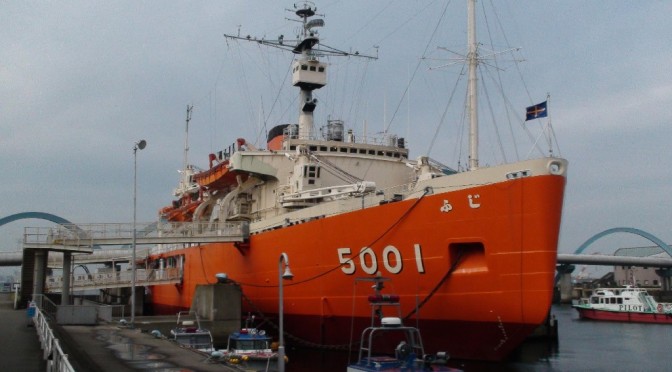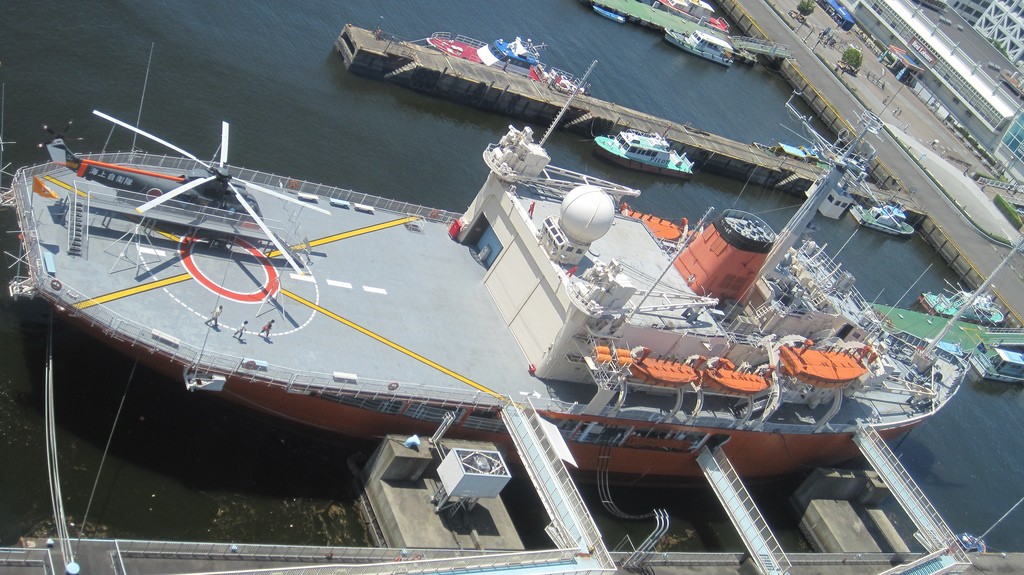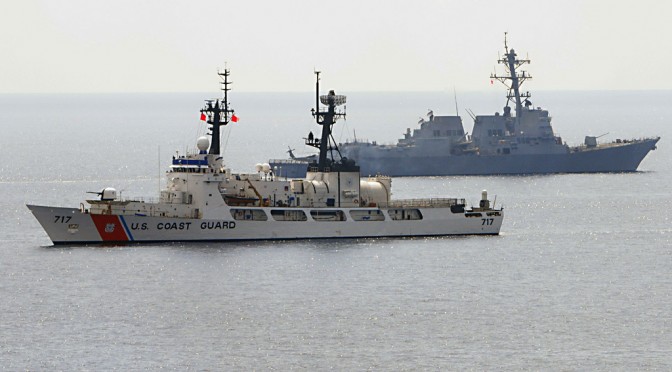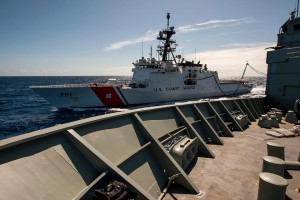By Alex Calvo
A cold and rainy day was the perfect backdrop for a visit to the Fuji, a Japanese polar exploration ship turned museum. Moored at Nagoya harbour and easily accessible by public transportation, the Fuji has much to offer to all sorts of people. Ship lovers will enjoy exploring her many corners, science fans will welcome the information about Antarctica, and families with children will see their little ones have a good time and learn. Those historically-inclined will soon perceive how the ship, which started operating in 1965, embodies Japan’s re-birth following the destruction of WWII. She displays the country’s strong scientific and technical foundations and the newly-found determination not only to rebuild but also rehabilitate the nation in the eyes of the world. Polar exploration, with its mixture of high-tech and advanced science on the one hand, and old-fashioned pioneering spirit on the other, was perhaps uniquely placed to help Japan achieve those goals. The fact that the White Continent was not open to territorial conquest by exploration following the Antarctic Treaty, made it easier for Japan to push for her scientific program without fear of alienating domestic public opinion or neighbouring countries. Of course, the 60s and 70s were much more complex than some simplistic narratives may have us believe, but nevertheless they were optimistic, and for Japan seemed to hold the promise of perpetual economic growth underpinned by technological progress and a benign external environment under the Pax Americana. Now that the country needs to contend with a stagnant economy and a much more troublesome neighbourhood it is easy to look back with a certain nostalgia.
This is not to say that the ship turned museum tries to sugarcoat the travails of her crew and scientists during her voyages to Antarctica. On the contrary, they become immediately clear to the visitor, not through any exaggerated narrative, but simply by observing the different sections of the ship, instruments and other pieces of equipment, and vignettes of life onboard. Thus a look into the officers’ and scientists’ cabins reveals a Spartan life, with the basic necessities of life provided for yet not much space, both physically and metaphorically, for much else. An impression reinforced by a view of the crew’s quarters. Even before getting to the information panels, equipment items, and newspaper clips, displayed in the former helicopter hangar, walking inside the ship makes one easily imagine the mixture of excitement and hardship, novelty and routine, science and more mundane navigation and administration, that must have filled life on board the Fuji.
Once in the hangar, more details are available, and these first impressions are complemented by further text and details, giving the visitor a well-rounded view of the Fuji and her mission. One can easily spend a good half an hour going through the different displays and accompanying text. It is also here that for many children the most interesting part of the visit will begin, with a look at real polar vehicles, plus a helicopter on the flight deck. From there, visitors have the chance to see the ship from the outside, going up to the navigation bridge, before leaving. The contrast between the tight quarters and interior spaces of the Fuji and the sight of a seemingly much larger ship from her top, is one of the visit’s paradoxes.
While a visit to the Fuji does not take that long, those planning a full day out can also include the nearby maritime museum and aquarium, or have a walk round the harbour and its different shops and sights. Although by no means unique in the Japanese context, Nagoya is a significant industrial powerhouse and her port among the most important in the country. The Fuji museum is a reminder of both, and one of a number of museums and other sights that make Nagoya an interesting city to visit. She may not have Kyoto’s uninterrupted succession of temples and gardens (although it has plenty of both, even if often hidden), but she surely has plenty of scientific and industrial heritage, often in the form of museums. The Fuji belongs to this heritage, and being part of the history of the exploration of one of the harshest regions on earth, she also embodies the epic and élan associated with the conquest of the White Continent. Visiting the ship is a good way of capturing all these dimensions, in addition to being fun and informative.
Alex Calvo, a guest professor at Nagoya University (Japan), is the author of ‘Japanese Antarctic Expedition (1910-1912)’, in A. J. Hund ed., Antarctica and the Arctic Circle: a Geographic Encyclopedia of the Earth’s Polar Regions (Santa Barbara: ABC-CLIO, 2014). He tweets at Alex__Calvo and his work can be found at https://nagoya-u.academia.edu/AlexCalvo









